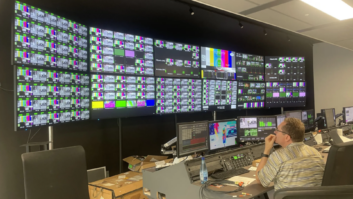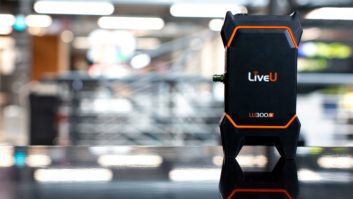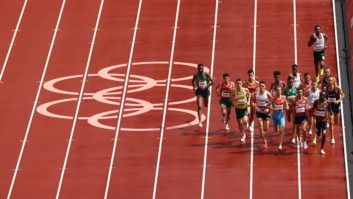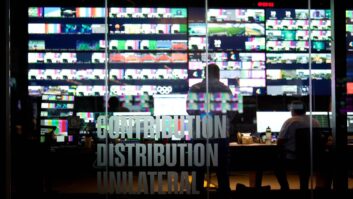The landscape of TV programmes and sporting events is about to undergo a significant transformation. The 4K UHD TV market has seen exponential growth and is projected to expand from $229.73 billion in 2023 to $285.28 billion in 2024. Consumers who have invested in these advanced TV and entertainment systems are eager to experience the superior quality and features they offer.
A crucial element of the Next Generation Audio (NGA) experience is the use of Serial ADM (S-ADM) metadata. This metadata describes the components of an audio programme, enabling object-based personalisation in TV productions. Defined in ITU-R BS.2125, S-ADM is beginning to gain traction.
This summer (2024), France TV and other European broadcasters will debut S-ADM in major sporting event broadcasts. These workflows are designed to deliver an unparalleled UHD experience, captivating audiences with the unique “wow” factor that only NGA can provide.
This summer’s showcase will feature:
- UHD playout based on a fully redundant IP backbone.
- 1080i/25/SDR signals normalised to UHD 2160p/50/PQ and input to Harmonic Spectrum X playout system.
- 2160p/50/HLG with NGA Atmos input to the playout system.
- S-ADM and Subtitles metadata input to the playout system.
- Nine Stereo Audio SMPTE 2110-30 flows, utilising S-ADM metadata within the 2110-41 specification, delivered to the ATEME Titan HEVC AC/4 encoder for distribution (MPEG-TS, DTT & IPTV).
- A Jünger Audio AIXpressor Professional Audio Processor – capable of authoring and rendering S-ADM and provided by Telos Alliance – feeding Harmonic Spectrum in each redundant network path and providing 2110-41 metadata to the IP network for distribution.
Typical Use Case for S-ADM
S-ADM is used to carry “bed mixes,” which combine channel-based audio with multiple announcer and dialogue channels using object-based audio. This allows for dynamic changes throughout the broadcast chain, from production to final encoders. These changes might include different announcer and language configurations, gain and position adjustments, or modifications to the channel configuration of the bed mix (stereo, 5.1, immersive) at programme boundaries. This flexibility enables operators to create various combinations, known as “presentations,” that viewers can select.

Both the audio and S-ADM are then backhauled to the broadcast centre via SMPTE ST 2110-30 or -31 for audio and ST 2110-41 for S-ADM. The metadata can also be carried as an audio channel in baseband connections using SDI or AES3.
At the broadcast centre, AIXpressor’s S-ADM rendering engines produce different outputs for monitoring and QA purposes and feed downstream encoders that are unaware of S-ADM. Operators can select from various presentations offered in the S-ADM stream and monitor in stereo, 5.1-channel, and immersive configurations, adjusting them as needed. AIXpressor can also modify the S-ADM within the broadcast centre to reflect changes due to ad insertions or other programme modifications.
Serial ADM is a key component in France 2’s summer games production system, enabling personalisation with Next Generation TV Audio broadcasts. The Jünger Audio AIXpressor provided by Telos Alliance is at the forefront, supporting broadcasters in the initial deployments of this emerging technology.







